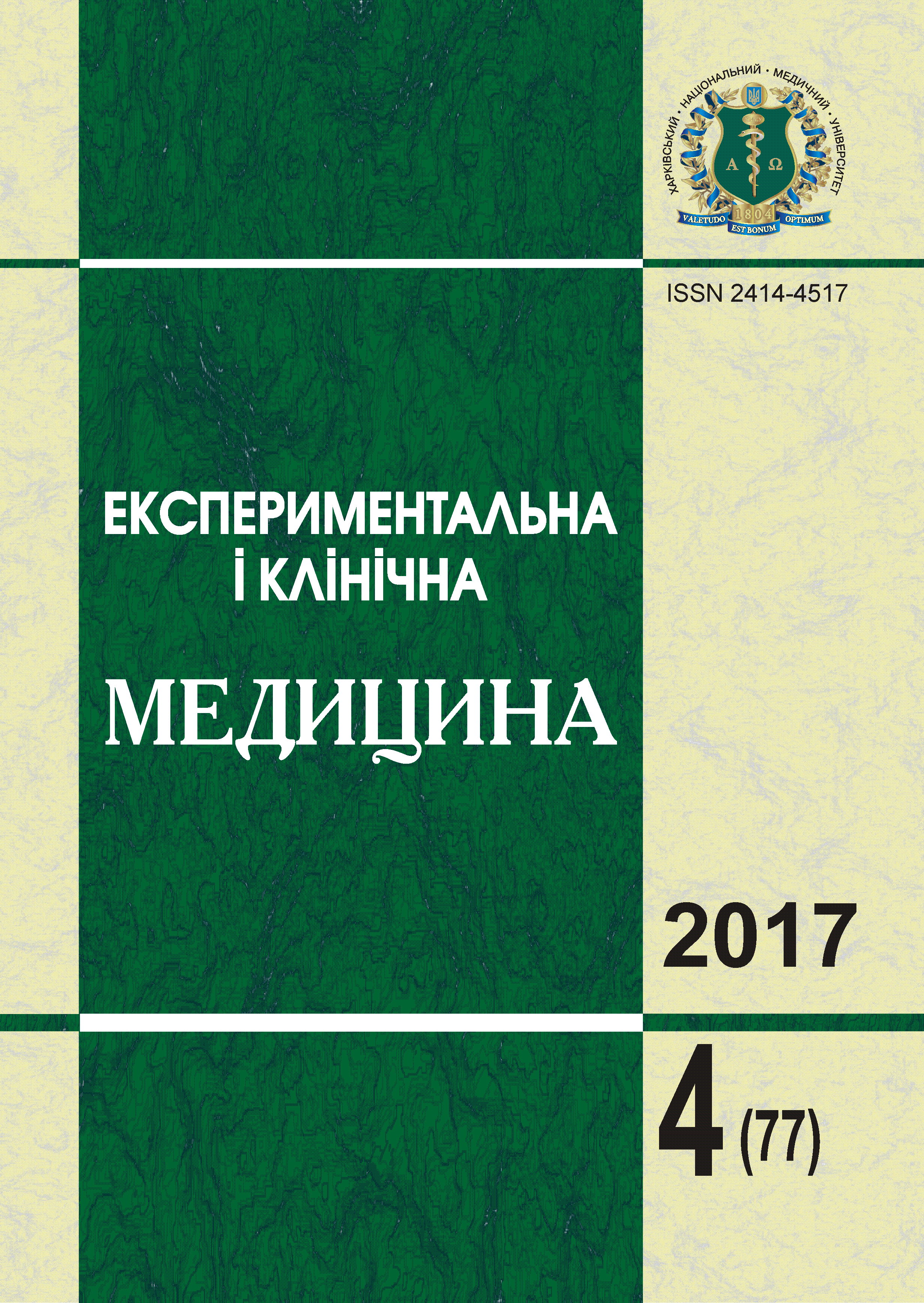Abstract
Thermal trauma is associated with biochemical changes in the macroorganism. It was compared the levels of lipid peroxidation, total antioxidant activity and acute phase protein in animals with Pseudomonas-infection of burn wounds during treatment with experimental application sorbents and silver sulfadiazine. It was shown that the level of levels of lipid peroxidation in animals treated with an application sorbent with levofloxacin was lowering for the second week and the level of total antioxidant activity was increased by the third week, which indicated as positive trend. Normalization of acute phase proteins levels was on the 14th day. It can be assumed that the use of the application sorbent with levofloxacin accelerates the process of normalizing the biochemical indices of the macroorganism and, thus, affects the earlier onset of healing of the infected burn wound in the experiment.References
Singh V., Devgan L., Bhat S., Milner S.M. (2007). The pathogenesis of burn wound conversion. Ann. Plast. Surg. 59 (1): 109–115.
Evers L.H., Bhavsar D., Mailänder P. (2010). The biology of burn injury. Exp. Dermatol. 19: 777–783.
Baklanova O.N., Pyanova L.G., Talzi V.P. et al. (2012). Modifitsirovanie poverkhnosti uglerodnogo sorbenta poli-N-vinilpirrolidonom dlya applikatsionnoy meditsiny. Fizikokhimiya poverkhnosti i zashchita materialov. 48, 4: 363–369 [in Russian].
Belik E.V., Brykalov A.V., Bostanova F.A. et al. (2008). Fabrication and study of biologically active organosilica polymer composites used for application sorption. Fibre Chemistry. 40, 5: 445–446.
Minukhin V.V. (1997). Mikrobiolohichne obgruntuvannia rozrobky preparativ dlia profilaktyky i likuvannia synohniinoi infektsii. Dys. d-ra med. nauk: 14.02.05. Kharkiv [in Ukrainian].
Popov М.М., Malanchuck S.G., Mishina М.М. (2017). Metabolic peculiarities at experimental generalized process caused by Pseudomonas aeruginosa (Electronic resourse). Annals of Mechnikov Institute. 2: 34–38.
Dubick M.A., Barr J.L., Keen C.L., Atkins J.L. (2015). Ceruloplasmin and hypoferremia: studies in burn and non-burn trauma patients. 4 (1): 153–169.
Jeschke M.G., Finnerty C.C., Kulp G.A. et al. (2013). Can we use C-reactive protein levels to predict severe infection or sepsis in severely burned patients? Int. J. Burn Trauma. 3 (3): 137–143.
Braig D., Kaiser B., Thiele J.R. et al. (2014). A conformational change of C-reactive protein in burn wounds unmasks its proinflammatory properties. International Immunology. 26 (8): 467–478.
